After the liquidation, I slowly climbed out of the mud with this method
After 6 years of full-time trading, I experienced a reduction in capital and consecutive losses, but I managed to stabilize my footing with the 'return to essence' strategy. If you are doubting yourself,
This experience might help you.
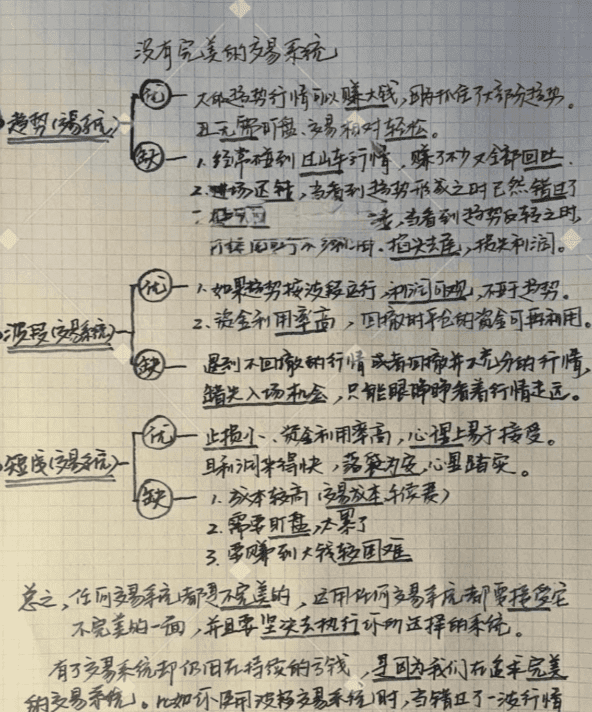
Part One: Entry Logic, focusing only on two types of high-certainty opportunities
1. Breakout from consolidation+: profit from the 'moment of ignition'
Price consolidation oscillates without direction; once an effective breakout occurs, the market starts; follow the direction with the trend, stop-loss if wrong, do not hesitate.
2. Trend turning point+: follow the large cycle, counter the small wave
Uptrend: enter after a price pullback;
Downtrend: Enter when the price falls back after a rebound.
Core: Capture turning points on the 15-minute/1-hour chart, with the daily and weekly trends remaining unchanged, small adjustments are opportunities to enter.
Part Two: Subtract rather than pile on indicators (the simpler, the more effective).
Direction judgment: only look at large cycles.
Daily and weekly lines determine direction, and small cycles seek opportunities to avoid short-term volatility disturbances.
Operation tracking: Focus on single cycles.
Only focus on 1-hour or 15-minute charts for execution, signals are clear, and do not complicate with multi-period verification.
Indicator assistance: just enough is good.
Use moving averages for profits+: Hold when the price is above the moving average; if it falls below, take profits. Don't rely on complex indicators.
Part Three: Position management, rely on light positions to 'gain experience and survive.'
Beginner stage: Start with 5% position.
When technical skills are immature, use light positions (≤5%) + stop losses; in case of losses, protect the opportunity for a turnaround.
Accept 'slow': Don't be greedy for short-term profits.
It's okay to be slow; with clear rules and account survival, time will amplify advantages, and compound profits can be accumulated.
Core: You must live long enough to talk about profits.
Liquidations often stem from the desire for a 'single turnaround.' Light positions can test mistakes and accumulate experience to avoid a complete exit.
In conclusion: Trading is a marathon, not a sprint.
Trading relies on patience + discipline + execution, the difference is made by abandoning the fantasy of a 'single turnaround' and returning to 'simple, repetitive, few mistakes, and long-lasting.' I walked out of the valley, and if you are in a predicament, you can try this method—walk slowly but don’t be afraid; trading is a matter of longevity.
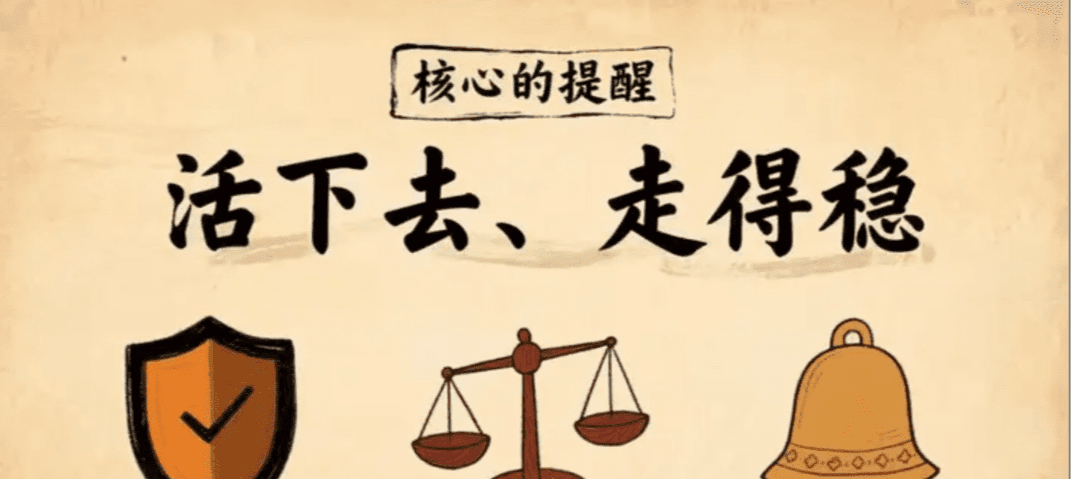
A 10-year blood and tears history in the cryptocurrency world: the profit-making secret learned only after three liquidations. After reading, avoid three years of detours.
In the wave of bizarre clouds in the cryptocurrency circle, I have rolled and crawled for eight years. The painful experience of three liquidations is like a mark engraved in my heart. From having nothing.
On the brink of bankruptcy, I later achieved stable profits and even increased my assets to 20 million. Along the way, I encountered pitfalls and summarized experiences.
Verification may remind later entrants, allowing everyone to take fewer detours in this market full of temptation and risk.
1. Cycle misjudgment: Hitting the rhythm is more important than blindly entering the market.
The speed of the bull-bear transition in the cryptocurrency market often catches people off guard. After numerous setbacks, I deeply realized that I must hold on tightly.
Bite the key node of Bitcoin halving* This critical node. Start building a bottom position 18 months before each halving, and gradually reduce positions 12 months after the halving.
This is the iron rule I recognized after stepping on countless pits.
Before Bitcoin halved in 2020, I followed this rhythm, using 60% of my funds to allocate mainstream coins. During this period, even after experiencing 312.
In such extreme market conditions, I also gritted my teeth and held on. Ultimately, this wave of operations brought me three times the profit. You must know that in this.
In the market, small coins often look to Bitcoin's performance, while Bitcoin's trends are closely related to the Federal Reserve's policies. Therefore, do.
Never go against the trend; only by following the trend can you stand firm in the market.
2. Dynamic position balancing: Only with good opportunities can you turn the tables.
"Living gives opportunities" is the primary principle for survival in the cryptocurrency circle, and the key to achieving this lies in dynamic position balancing. I.
I have consistently adhered to the '30-30 rule' to manage funds: 30% bottom positions are held long-term as a stable foundation; 30% is used for swing trading.
Capture short-term opportunities in the market; keep 30% in cash to respond to emergencies.
In 2022, during the collapse of LUNA*, the market was in panic, and many suffered heavy losses. It was that 30% cash that allowed me to.
When Ethereum dropped to $1,000, I bought at the bottom, recovering many losses. Additionally, the position in a single coin should never exceed 20% to effectively avoid falling into a situation where everything is lost when a black swan event occurs.
3. Signal filtering must be ruthless: Don't let emotions influence your operations.
In the cryptocurrency circle, emotions are the biggest enemy. Every day I open the market software, I only focus on three indicators to filter out various disturbances.
Signal, avoid being influenced by emotions. RSI + above 70 must take profits decisively, MACD + a death cross on the daily chart means reduce positions, if major funds flow out for three consecutive days, exit decisively.
In May 2021, when Bitcoin surged to 60,000, these three signals appeared simultaneously. At that time, the market was in a frenzy, and many people were shouting that it would still.
It may rise, but I strictly follow signals and cleared 80% of the positions. This decision proved to be correct, perfectly avoiding.
Subsequent market crashes. In this market, being able to control your hands and not be driven by greed and fear allows for rational judgment.
4. Black box response: Pre-set plans are necessary to deal with emergencies.
The cryptocurrency market is never short of sudden situations. Changes in policies, negative technical news, etc., can trigger drastic market fluctuations. Therefore, I have summarized the 'extreme market formula' to respond to these black box events. When declines exceed 30%, first look at support levels, wait for a 15% rebound on volume before entering; when increases exceed 50%, first check the sustainability of the good news, decisively take profits on a 20% volume pullback.
Last year, on the night of the FTX crash, the market fell into extreme panic, and prices plummeted. I relied on this preset formula to remain calm amidst the chaos, ultimately recovering 20% of the losses. The preset plan is like a light in the dark, allowing us not to be helpless in emergencies.
5. Cognitive updates: The market is always changing; clinging to past experiences is equivalent to suicide.
The speed of change in the cryptocurrency circle is so fast that describing it as 'different every day' is not an exaggeration. The market is always changing; clinging to past experiences is undoubtedly equivalent to suicide. Therefore, I have developed a habit of continuous learning and summarizing: researching a new project’s white paper every week to understand the industry.
New dynamics; monthly review of operational logs, analyzing the reasons for success and failure; update the investment framework once a year to keep your cognition in line with market trends.
In 2018, I lost a million because I blindly participated in ICOs. That painful lesson thoroughly shifted my focus to value investing, only investing in cryptocurrencies with real application scenarios. One day in the cryptocurrency circle is like a year in the human world; if you don't follow the market to learn and progress, you can only be ruthlessly eliminated.
In summary, surviving in the cryptocurrency world has no fixed rules, only continuous summarization and adaptation. I hope these experiences can help you who are exploring the cryptocurrency space.
I am Yi Yan, having experienced multiple bull and bear markets, with rich market experience in various financial fields. Here, penetrate the fog of information, discover the real market, and seize more wealth passwords and opportunities. Discover truly valuable opportunities; don’t miss out and regret later!
Trading cryptocurrencies for over a decade has led me to the strategy that truly allows for stable compounding: squeezing patterns* + false breakouts, dual strategies penetrate the choppy situation!
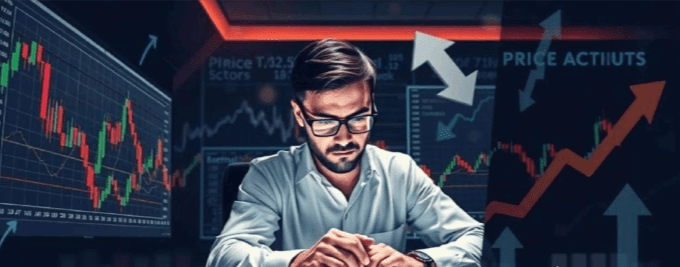
There are nearly infinite ways to interpret price behavior—the field of technical trading is constantly emerging with new strategies and systems.
We do not have to be confined to isolated K-line signals but can further search for the overall shape of price behavior.
Squeezing breakout strategy.
The market often goes through consolidation. Sometimes it is chaotic like a minefield; sometimes it presents certain structures.
The so-called 'squeezing' pattern is formed by gradually lowering highs and gradually raising lows, ultimately forming a triangular shape, which some also refer to as a wedge.
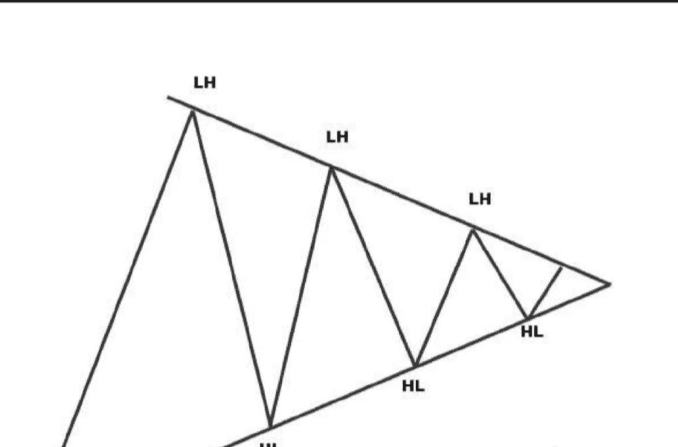
What is referred to as 'squeezing' here is caused by gradually lowering highs and gradually raising lows.
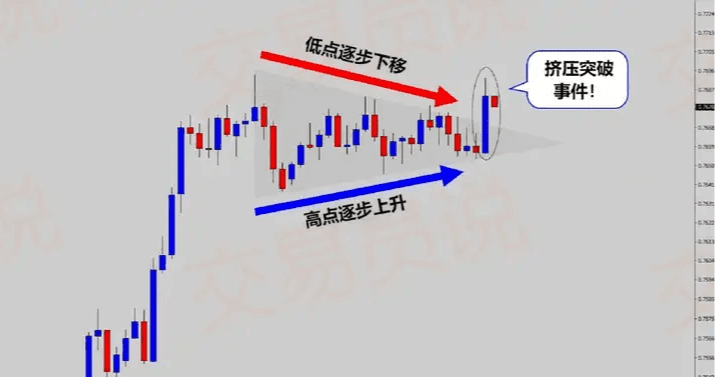
This squeezing pattern can appear anywhere, but I find it more often in the time frames of intraday swing trading (such as 4 hours).
Time is up to the 12-hour chart.
It indicates that the market is accumulating momentum and is likely to break out sharply in a certain direction soon. What you need to pay attention to is the K-line that clearly breaks through the structure.
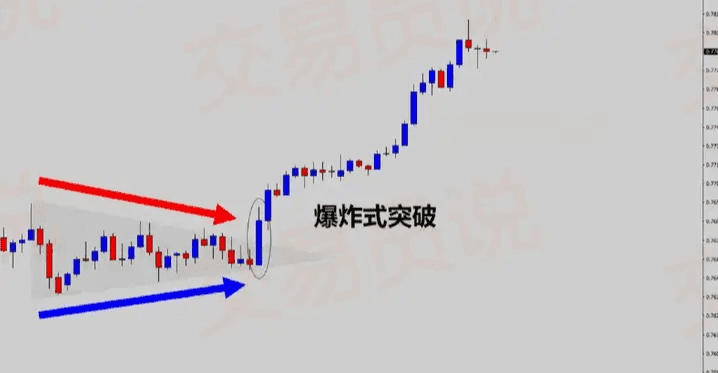
The core of this strategy is not to trade rebounds at the edges of structures but to wait for clear price breakthroughs of the structure before entering. A breakout of the squeezing pattern signifies that higher prices are likely coming.
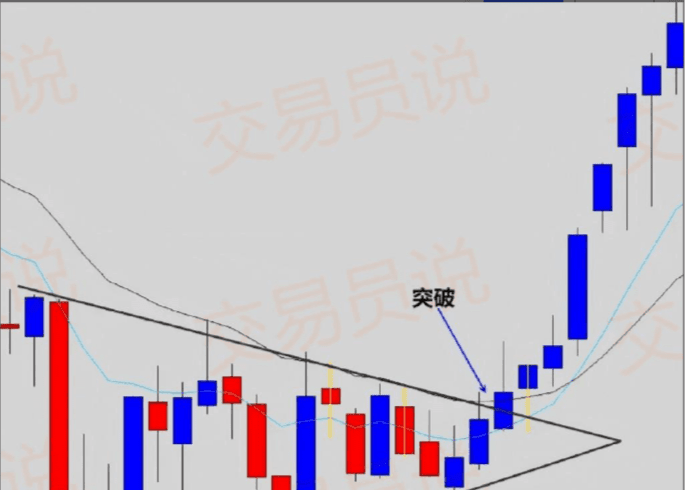
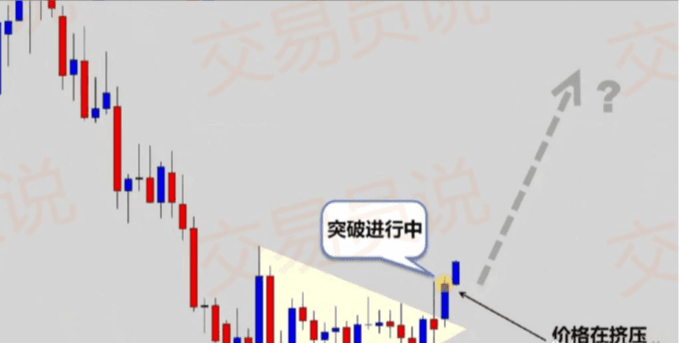
Once a clear closing price breaks through the squeezing structure, it is usually accompanied by a considerable trend, as the market often has explosive potential after breaking through the consolidation period.
However, 'aggressive traders' must remain vigilant; those who rush to enter as soon as a breakout occurs are very likely to fall into traps because these consolidation patterns can easily produce false breakouts!
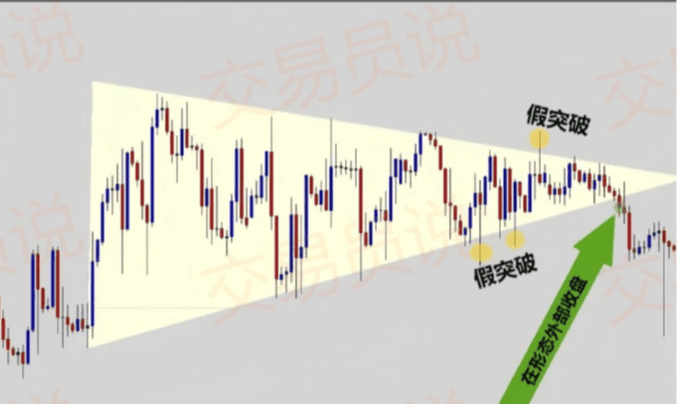
Closing prices outside the squeezing structure indicate a valid breakout: As shown in the figure, aggressive breakout traders are easily trapped when the market 'seems' to break out. You should wait for the K-line to close to confirm the breakout.
Being trapped by false breakouts is a frustrating experience. It can lead you to negatively evaluate yourself and trigger a series of self-destructive trading reactions, such as 'revenge trading.'
Therefore, it is best not to trade these patterns aggressively. If you choose to do so—be sure to incorporate the additional risks of false breakouts into your risk management.
False breakout event—profit from failed breakouts.
Have you ever just entered a trade, only for the price to reverse immediately?
Such situations can easily make people angry, even doubting if there is a 'mysterious force' targeting them.
In fact, you may have fallen into a breakout trap, also known as a 'false breakout.'
The market is very cunning; it will use technical shapes to 'turn the tables on us.' Charts make you believe that prices are breaking through a certain key technical level.
And you are drawn in, thinking: 'This is the breakout trend I want to catch!'
However, just when you place your bet, the market 'fakes the breakout' and reverses quickly. Such occurrences are not uncommon.
Therefore, without absolute certainty, it's best not to trade those significant technical level breakthroughs lightly.
Next time, consider this problem from a different angle:
If we choose to be smarter next time a breakout occurs—what if we just observe?
If this time is a true breakout, we will patiently wait for opportunities after the breakout trend is established.
But what if we find it’s a false breakout? This time we won’t be trapped, but rather can treat it as a trading signal!
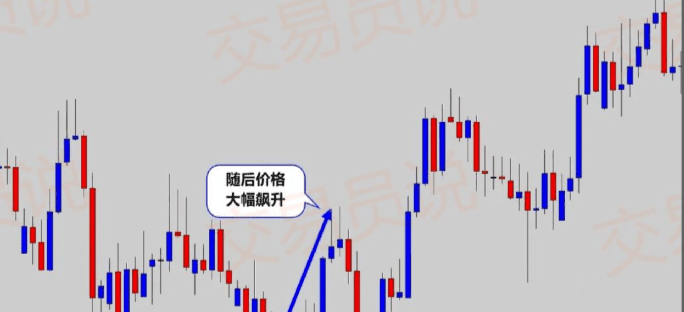
As shown in the figure: The market is clearly attempting to break below the support level. If we blindly pursue breakout trading, we will be trapped in this bearish trap!
But as patient traders, we have observed the 'consequences' of false breakouts—namely an obvious lower shadow piercing through technical support levels.
This suggests that the market has failed to continue to decline, indicating that there is no real weakness below, but rather a possible strong signal. In this event, going long could yield considerable returns.
Another example of a false breakout resistance:
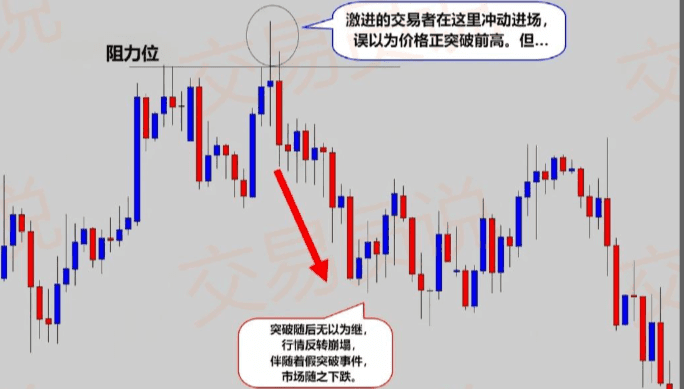
As shown in the figure: Imagine you are a trader who buys immediately after the price breaks through the resistance level, believing this is the beginning of a new wave of upward trends.
As a result, you get stopped out, feeling annoyed and possibly thinking about 'revenge trading' the market.
But if we don’t recklessly trade these significant technical level breakthroughs but choose to wait and observe, the opportunities brought by these false breakouts will be clearly visible on the charts.
Upper shadow lines indicate that bulls attempted to push up but failed, and the market begins to show weakness. If we short on this weak signal, we may obtain good returns.
I won't let this lesson be too long—it's a simple concept, but it’s worth your deep thought in trading.
Summary.
When the market is in a consolidation state, it lacks clear directional momentum. Trading in such a state is like flying a kite in a thunderstorm, with extremely high risks.
However, some consolidation periods will form organized structures, and you can use these structures to capture potential breakouts, such as the breakout of squeezing patterns, which usually have strong explosive potential.
Do not trade those breakthroughs that cross major technical levels; these areas carry a high risk of false breakouts. Instead, try to be a patient trader, waiting for price behavior after attempting to break through. Is it a true breakout? Or a false move?
We can look for continuation signals after a true breakout or utilize opportunities from false breakouts, capturing chances from failures.

After figuring out how to trade cryptocurrencies, you can find the rhythm in a chaotic market and no longer be swayed by fluctuations.
Ten years ago, I first entered the cryptocurrency circle, and like retail investors, I relied on luck to profit and guessed to incur losses, exhausting myself without making money. Later, I turned to value investing by learning and improving my cognition.
Sharing experiences with masters and seniors slowly enlightened me, forming a grounded investment system.
Those who can go far in the cryptocurrency world are those who can refine simple methods to the extreme. My set of strategies has 4 cores, and beginners can also grasp them:
1. Only keep 1 indicator: 2 EMAs + just enough.
Only look at EMA21 (short-term) + EMA55 (medium-term), do not mix in other indicators. Signals are direct: golden cross (EMA21 crossing up).
EMA55) is bullish, death cross (crossing down) is bearish; the simpler, the easier it is to capture trends.
2. Choose entry positions: Only focus on 4 hours, avoid choppy positions.
Decision-making relies entirely on the 4-hour chart; do not focus on short cycles.
Long position: EMA21 crossing above EMA55 + K-line closing bullish; none can be missing.
Short position: EMA21 crossing below EMA55 + K-line closing bearish, all conditions must be met.
No-go zone: Absolutely avoid the middle positions in choppy markets to prevent back-and-forth losses.
3. Stop losses must be enforced: Don’t hold onto positions; control losses.
Set stop losses at the high and low points of the previous 4-hour K-line (look at the previous low for long positions and the previous high for short positions), with a single loss ≤ 5% of capital. Accept small losses, never hold onto positions to prevent small losses from becoming deep traps.
4. Profits must be rolled: Follow the trend and maintain profits.
Use 5% of funds for the first position, increase positions after a 5% profit, and continue to add as profits persist, following the trend until the EMA crossover signal reverses, maintaining profits while capturing trend bonuses.
◆ Mindset rules: More important than methods is 'stability.'
Don't be greedy for all wins: accept that not every trade is profitable; missing a chance is better than making a mistake.
Control frequency: A maximum of 1-2 trades per day, do not get itchy fingers and open random positions.
Follow the system and maintain discipline: Set the strategy and execute it, unaffected by short-term fluctuations, long-term compounding will naturally come.
"Simple methods" are not stupid; they simplify a complex market into executable rules, suitable for those who do not want to strain their eyes on the screen or be enslaved by emotions, maintaining a high win rate.
Trading is not about getting rich overnight but about reasonable profits that can be long-lasting, stable, sustainable, and have a high probability, allowing oneself to continuously acquire wealth.
Professionally create value, details determine success or failure. If you feel helpless or confused while trading in the cryptocurrency circle, I hope my sharing can bring you some inspiration and help!
I am A-Xun, having experienced multiple bull and bear markets. I entered the industry three years ago, understood it in five years, and became a king in ten years. I have rich market experience in multiple financial fields. Here, penetrate the fog of information and discover the real market, grasp more wealth passwords and opportunities.
Seize and discover truly valuable opportunities; don’t miss out and regret later!
Welcome to follow A-Xun, where you can watch real-time trading, learn and communicate, and clarify market direction and strategies. Regardless of market styles, knowing in advance allows you to better master!
Our team still has spots available; hop on quickly and become both a market maker and a winner.$BTC $ETH